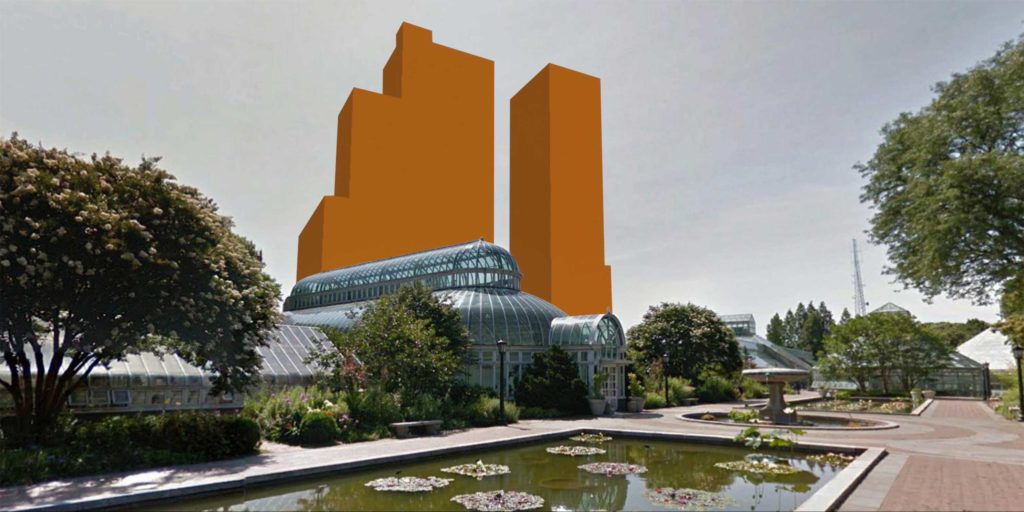The stakes of the 960 Franklin Avenue Proposal on Crown Heights

Image: Rendering of 960 Franklin Avenue Development from viewpoint of Brooklyn Botanic Garden/Source: Municipal Art Society
From Brooklyneagle.com
By Emily Nadal
The 960 Franklin Avenue development proposal only made it past the first step of the city’s uniform land use review process (ULURP) before it tried to change course. Heeding calls from the community, project developers attempted to scale back their original 34-story, 1.4 million square foot massive structure which threatened not only the neighborhood’s affordability but it’s natural sunlight as well.